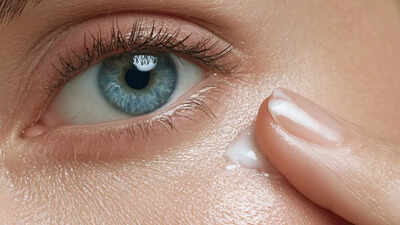
Eye floaters are small, shadowy shapes or thread-like strands that drift across your vision, often most noticeable against bright or plain backgrounds. These common visual disturbances, medically known as myodesopsias, usually occur when clumps of gel or cells in the vitreous humor cast shadows on the retina. While floaters are often harmless and part of the natural aging process, they can sometimes indicate underlying eye conditions that require attention. Sudden increases in floaters, flashes of light, or changes in vision may signal serious issues. Understanding the causes and when to seek care is essential for maintaining eye health.
4 causes of eye floaters that could impact your vision
Uveitis
Uveitis is inflammation of the uvea, the middle layer of the eye that includes the iris, ciliary body, and choroid. This condition can result from autoimmune disorders, infections, or eye injuries. According to a study published in NIH, floaters appear in uveitis because inflammatory cells and debris accumulate in the vitreous humor, casting shadows on the retina. People with uveitis may also experience eye redness, pain, blurred vision, and light sensitivity. Early diagnosis and treatment with anti-inflammatory or immunosuppressive medications are crucial to controlling symptoms and preventing complications such as glaucoma, cataracts, or permanent vision changes. Managing uveitis promptly can significantly reduce the risk of long-term eye damage.
Diabetic retinopathy
Diabetic retinopathy is a common eye condition among people with diabetes, caused by damage to the retina’s blood vessels due to prolonged high blood sugar levels. This damage can lead to leaking blood vessels, fluid accumulation, and even bleeding within the eye, which contributes to the appearance of floaters. Individuals may also notice blurred vision, dark spots, or difficulty seeing in low-light conditions. Regular diabetic eye exams are critical for early detection and management. Treatments may include laser therapy or anti-VEGF injections to prevent further damage. Proper blood sugar control is equally important in reducing the risk of developing diabetic retinopathy and floaters associated with it.
Eye infections
Certain eye infections can also trigger the development of floaters by introducing inflammatory cells or debris into the vitreous humor. Infections such as herpes simplex virus affecting the eye, toxoplasmosis, and cytomegalovirus infections are known contributors. Alongside floaters, individuals may experience redness, eye pain, discharge, or blurred vision. Prompt treatment of the underlying infection is essential to prevent complications, such as retinal scarring or permanent vision impairment. Addressing the infection can often reduce floaters over time and protect overall eye health.
Retinal detachment
Retinal detachment is a serious and urgent eye condition in which the retina separates from its normal position at the back of the eye. This separation disrupts light reception and can quickly lead to permanent vision loss if not treated immediately. Floaters and flashes of light are often early warning signs, accompanied by a sudden increase in floaters or a shadow or curtain effect over part of the visual field. Surgical intervention, such as vitrectomy or a scleral buckle procedure, is usually required to reattach the retina and preserve vision. Immediate ophthalmologic care is critical if these symptoms appear, as retinal detachment is a true emergency.
How to manage eye floaters
For most people, eye floaters are harmless and part of the natural aging process. Regular eye exams help monitor changes in floaters and detect any serious underlying conditions. Many individuals adapt to floaters over time, as they often become less noticeable. In rare cases where floaters significantly interfere with vision, a vitrectomy surgery may be considered to remove the vitreous gel and clear the floaters. However, surgery carries risks such as cataracts and retinal detachment, so it is reserved for severe cases. Sudden changes in floaters, flashes of light, or vision loss should prompt immediate evaluation to rule out retinal detachment or other urgent eye conditions.Disclaimer: This article is for general informational purposes only and is not a substitute for professional medical advice, diagnosis, or treatment. Always seek the guidance of a qualified healthcare provider regarding any medical condition or lifestyle change.Also Read: This simple blood test can detect liver damage years before signs show








